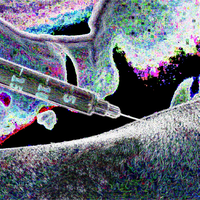| α-Cresol | |
|---|---|
| Molecular structure via molpic based on CDK |
| Physical properties [] | |
|---|---|
| Molecular mass | 108.14 g/mol [1] |
| Density | 1.05 at 1515 °F (USCG, 1999) - Denser than water; will sink g/cm3 [1] |
| Appearance | Water-white liquid [1] |
| Odor | Faint aromatic odor [1] |
| Taste | Sharp burning taste [1] |
| Melting point | 4.5 ° [1] |
| Boiling point | 401 ° [1] |
| Decomposition | When heated to decomposition it emits acrid smoke and fumes. [1] |
| Solubility | 10 to 50 mg/mL at 70 °F (NTP, 1992) [1] |
| Predicted LogP | 1.1 [1] |
| Structural Identifiers [] | |
|---|---|
| Molecular formula | C7H8O [1] |
| IUPAC name | phenylmethanol [1] |
| SMILES | C1=CC=C(C=C1)CO [1] |
| InChI | InChI=1S/C7H8O/c8-6-7-4-2-1-3-5-7/h1-5,8H,6H2 [1] |
| InChIKey | WVDDGKGOMKODPV-UHFFFAOYSA-N [1] |
Benzylalcohol
Benzylalcohol (also known as benzyl alcohol, phenylcarbinol, Benzoyl alcohol, Benzenecarbinol, Phenylmethyl alcohol, (Hydroxymethyl)benzene, Phenolcarbinol, Alcool benzylique, Benzal alcohol or Methanol, phenyl-) is a
Chemistry
Stereochemistry []
Benzylalcohol is a achiral mixture
| Anodyne Usernotes [] | |
|---|---|
| 0xea / Benzylalcohol via Oral, Subcutaneous, Intramuscular, Dermal, Intradermal at 500mg oral and 1044mg dermal |
|
See also []
External links []
References []
National Center for Biotechnology Information. PubChem Compound Summary for CID 244, Benzylalcohol. Accessed June 29, 2025. https://pubchem.ncbi.nlm.nih.gov/compound/244
U.S. Food and Drug Administration; National Center for Advancing Translational Sciences. Benzylalcohol. UNII: LKG8494WBH. Global Substance Registration System. Accessed June 29, 2025. https://gsrs.ncats.nih.gov/ginas/app/beta/substances/LKG8494WBH
 Anodyne
Anodyne